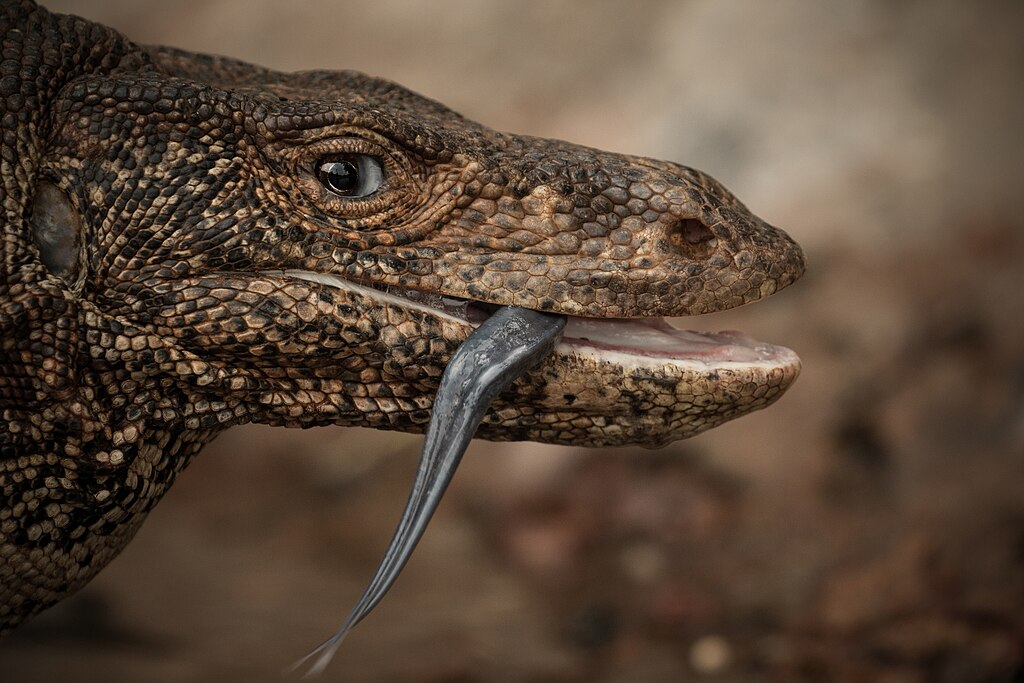With their powerful limbs, razor-sharp claws, and flickering tongues, monitor lizards command attention wherever they roam. These remarkable reptiles represent living connections to the ancient world of dinosaurs, carrying forward evolutionary adaptations that have allowed them to thrive for millions of years. From the massive Komodo dragon to the nimble tree monitors, these carnivorous reptiles display fascinating behaviors, remarkable intelligence, and surprising adaptability across diverse habitats. Their prehistoric appearance belies complex animals that continue to captivate scientists and wildlife enthusiasts alike.
Ancient Lineage and Evolutionary History

Monitor lizards belong to the family Varanidae, with a fossil record stretching back over 90 million years to the Late Cretaceous period. Their evolutionary journey paralleled that of dinosaurs, with monitors surviving the mass extinction event that claimed their larger reptilian cousins. Modern monitors retain many primitive characteristics, including their elongated necks, powerful tails, and specialized sensory adaptations. Recent phylogenetic studies suggest monitors share a common ancestor with snakes, forming part of a larger group called Toxicofera that includes venomous reptiles. This ancient heritage is evident in their body plan, which has remained remarkably consistent despite diversification into numerous ecological niches across Africa, Asia, and Oceania. Their evolutionary success story spans tens of millions of years, making them living fossils in many respects.
Diversity and Distribution
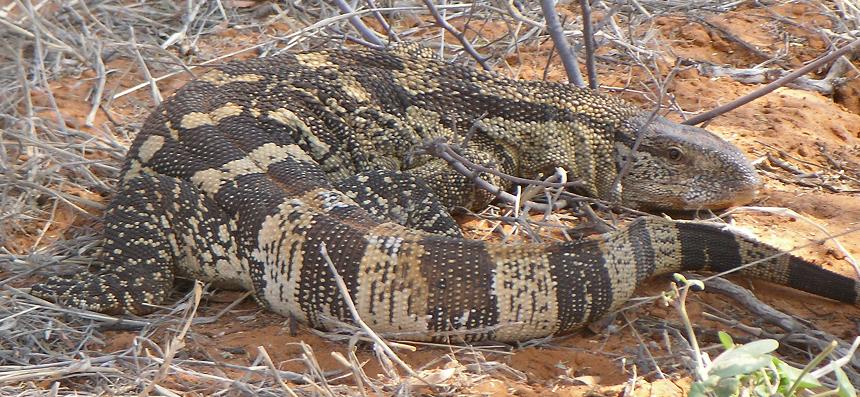
The Varanidae family comprises approximately 80 recognized species spread across the Old World tropics. The greatest diversity exists in Australia, home to about 30 monitor species ranging from the diminutive short-tailed monitor to the massive perentie. Southeast Asia hosts numerous arboreal and semi-aquatic variants, including the water monitor, which frequents coastal areas and river systems. African savannas support the Nile monitor and several other terrestrial species adapted to arid environments. The iconic Komodo dragon, the world’s largest lizard, is restricted to just a few Indonesian islands. Each species has evolved specific adaptations to its habitat, resulting in dramatic variations in size, coloration, and behavior across the family. This remarkable adaptive radiation demonstrates the evolutionary plasticity that has allowed monitors to colonize diverse ecosystems from rainforests to deserts.
Physical Characteristics and Adaptations
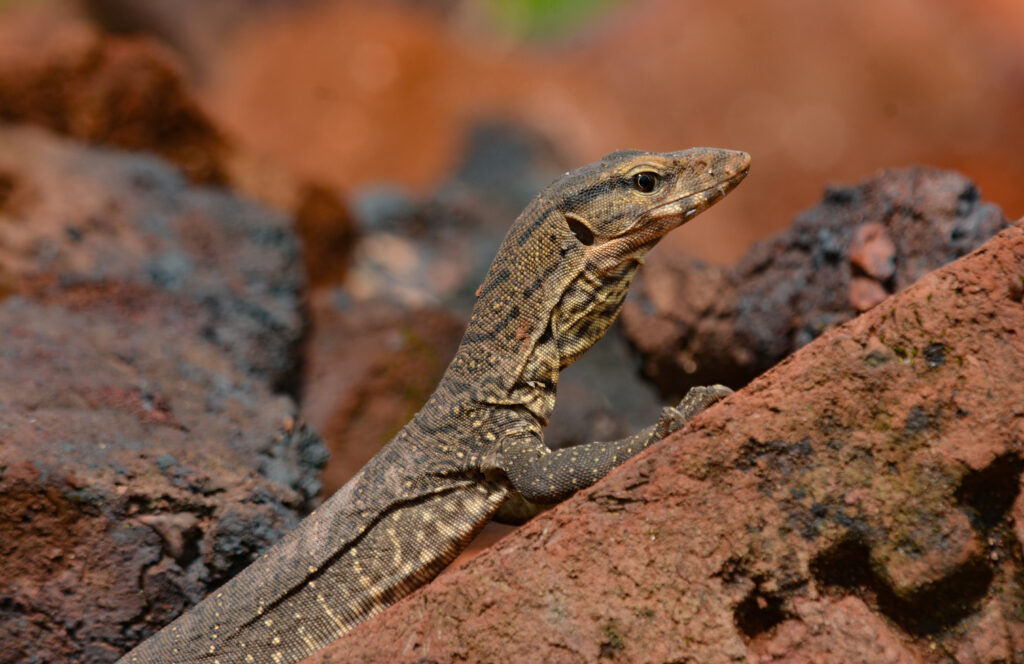
Monitor lizards possess a distinctive body structure characterized by powerful limbs, elongated necks, and muscular tails that often exceed their body length. Their scales, while small and generally non-overlapping, create a beaded texture that’s immediately recognizable among reptiles. Most species exhibit countershading—darker coloration above and lighter below—though patterns vary from intricate mottling in forest-dwelling species to simple striping in grassland inhabitants. Their powerful claws serve multiple functions: digging, climbing, and subduing prey. Perhaps most striking is their sensory equipment, particularly Jacobson’s organ in the roof of the mouth, which processes chemical information gathered by their constantly flicking forked tongues. This chemosensory system gives monitors an almost supernatural ability to detect prey, even buried underground or hidden underwater. Their eyes feature excellent vision, complementing their chemical sensing abilities and creating formidable predators.
The Komodo Dragon: Icon of the Monitor Family
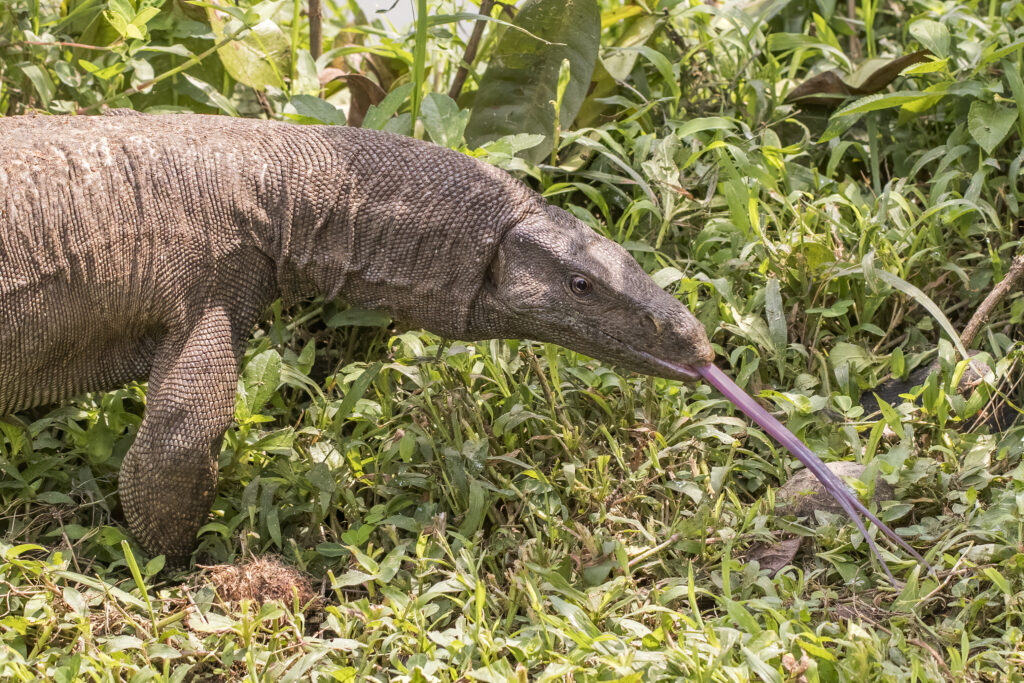
The Komodo dragon (Varanus komodoensis) stands as the undisputed giant of the monitor world, with males routinely reaching 10 feet in length and weighing over 300 pounds. Endemic to just five islands in Indonesia, these massive reptiles represent an evolutionary phenomenon known as island gigantism. Their hunting strategy combines ambush techniques with remarkable stamina, allowing them to deliver a bite laden with toxic bacteria and anticoagulant compounds before tracking wounded prey for miles if necessary. Komodo dragons possess unusual metabolic adaptations that allow them to consume up to 80% of their body weight in a single feeding, then potentially fast for weeks afterward. Their social behavior is more complex than once believed, with established hierarchies and territorial displays among males. Conservation efforts have succeeded in stabilizing wild populations, though habitat loss and poaching continue to threaten their existence on smaller islands. The Komodo dragon’s fame has brought global attention to monitor lizards as a whole, serving as an ambassador for reptile conservation worldwide.
Extraordinary Sensory Capabilities

Monitor lizards possess perhaps the most sophisticated chemosensory system among reptiles, centered around their vomeronasal organ (Jacobson’s organ). Their forked tongues sample air particles, which are then delivered to this specialized sensory organ for processing. This system allows monitors to build a three-dimensional chemical map of their surroundings, detecting prey that has passed through an area hours earlier. Experiments have demonstrated that some species can follow chemical trails left by prey animals for distances exceeding a kilometer. Beyond chemical sensing, monitors possess exceptional vision with color perception and depth sensitivity that aids in hunting and navigation. Some species show sensitivity to ultraviolet light, particularly useful for detecting urine trails of small mammals. Their hearing, while less acute than their other senses, remains adequate for detecting low-frequency sounds produced by potential predators. This sensory toolkit combines to create reptilian predators with awareness capabilities far exceeding what their prehistoric appearance might suggest.
Intelligence and Problem-Solving Abilities
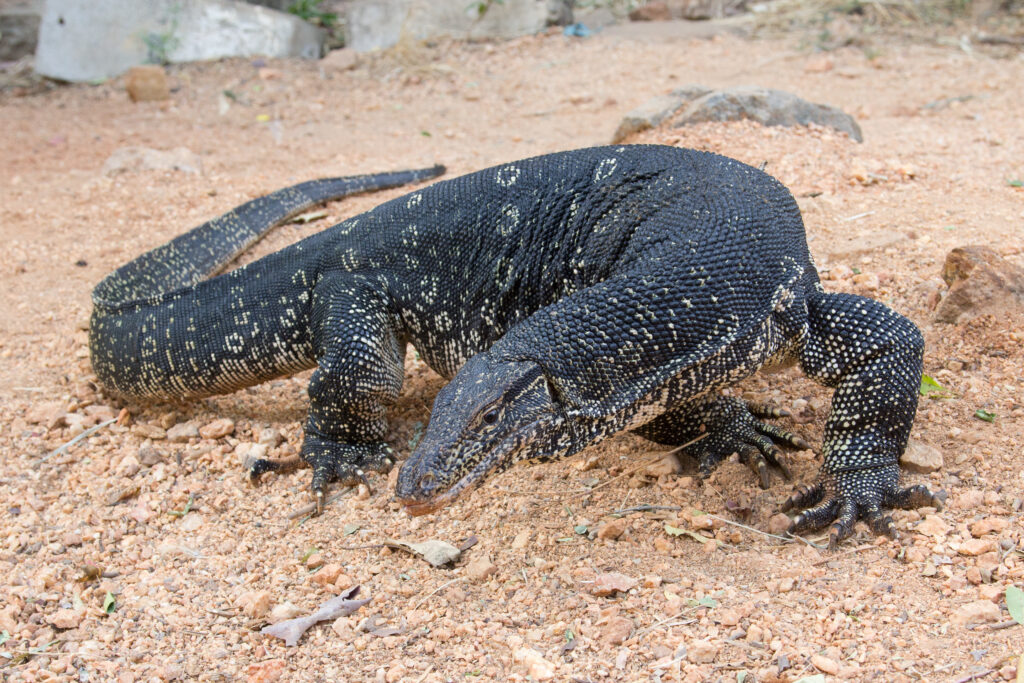
Monitor lizards consistently demonstrate cognitive abilities that challenge traditional views of reptilian intelligence. Captive specimens have been observed using novel tactics to solve complex puzzles, even memorizing solutions to repeated challenges. Field researchers have documented water monitors using sticks to lure nesting birds, suggesting tool use—a behavior once considered exclusive to mammals and birds. Komodo dragons recognize individual human keepers in captivity, modifying their behavior based on past interactions with specific people. Spatial memory appears particularly well-developed in many species, with individuals able to navigate complex environments and remember specific feeding locations over extended periods. Laboratory studies demonstrate that monitors can count small quantities and discriminate between different shapes and patterns. These cognitive abilities likely evolved in response to the challenges of being active predators that must track and capture mobile prey across varied habitats. The intelligence of monitor lizards places them among the most cognitively sophisticated reptiles alive today.
Hunting Techniques and Predatory Behavior
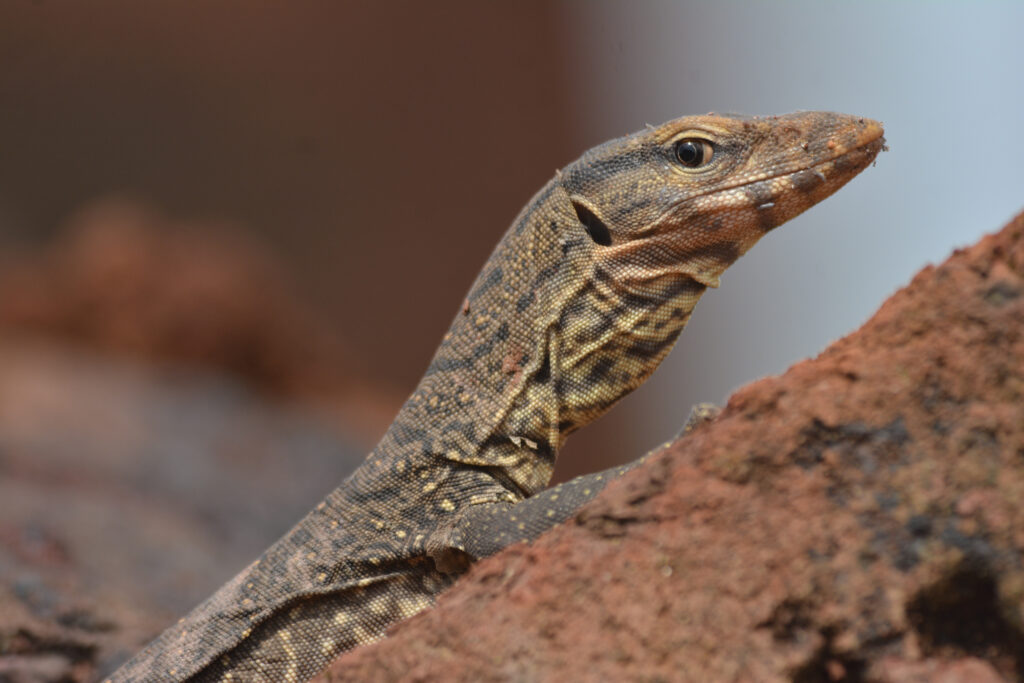
Monitor lizards employ diverse hunting strategies adapted to their specific habitats and prey types. Ambush hunting remains common across the family, with monitors using their cryptic coloration to remain motionless before exploding into action with surprising speed. Arboreal species like the emerald tree monitor use gravity to their advantage, dropping onto unsuspecting prey from overhead branches. Water monitors combine stealth with exceptional swimming abilities, approaching waterfowl from below before striking with lightning quickness. Most fascinating is their strategic hunting approach—many species will systematically investigate potential prey hiding spots, using their chemical sensing abilities to determine the most promising locations. The Komodo dragon exemplifies the family’s predatory capabilities, using a combination of stealth, powerful jaws, and venom-like compounds in its saliva to bring down prey many times its weight. Their hunting behavior demonstrates remarkable flexibility, with individuals often switching tactics based on prey type, habitat conditions, and previous experience.
Reproduction and Life Cycle
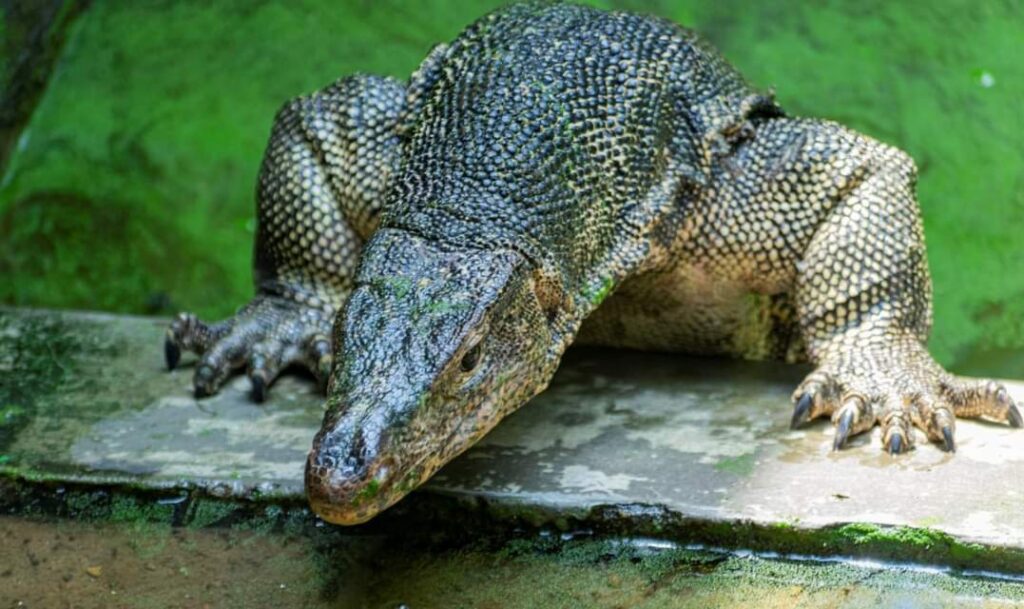
Monitor lizard reproduction follows a consistent pattern across the family, beginning with elaborate courtship displays between potential mates. Males typically compete for female attention through ritualized combat that showcases strength without causing serious injury. After successful mating, females deposit eggs in carefully selected locations—often excavating complex burrows or utilizing termite mounds that provide stable temperatures and humidity. Clutch sizes vary dramatically by species, with smaller monitors producing just 2-4 eggs while larger species may lay 20 or more. The incubation period typically lasts between 100-250 days, depending on species and environmental conditions. Unlike some reptiles, monitors do not exhibit temperature-dependent sex determination, with genetic factors instead determining offspring gender. Hatchlings emerge fully formed, miniature versions of adults, immediately capable of hunting small prey. Young monitors grow rapidly in their first years, though most species require 3-5 years to reach sexual maturity. Larger monitor species can potentially live for several decades, with the Komodo dragon documented reaching ages exceeding 50 years in captivity.
Ecological Importance

Monitor lizards function as keystone predators in many ecosystems, regulating populations of numerous prey species from insects to small mammals. Their scavenging behavior provides essential cleanup services, with many species readily consuming carrion that might otherwise become disease vectors. Some monitors serve as important seed dispersers, consuming fruits and depositing seeds far from parent plants with the beneficial addition of fertilizing feces. In wetland environments, burrowing species like the Nile monitor create complex tunnel systems that prevent soil compaction and increase aeration. Their excavation activities create microhabitats utilized by numerous smaller organisms, from invertebrates to amphibians. Juveniles and smaller monitor species themselves serve as prey for larger predators, transferring energy through trophic levels. As apex predators in some island ecosystems, monitors help maintain balanced food webs by controlling herbivore populations that might otherwise overgraze vegetation. The removal of monitors from their native habitats has repeatedly demonstrated cascading ecological effects, highlighting their importance as regulators of ecosystem health.
Threats and Conservation Challenges
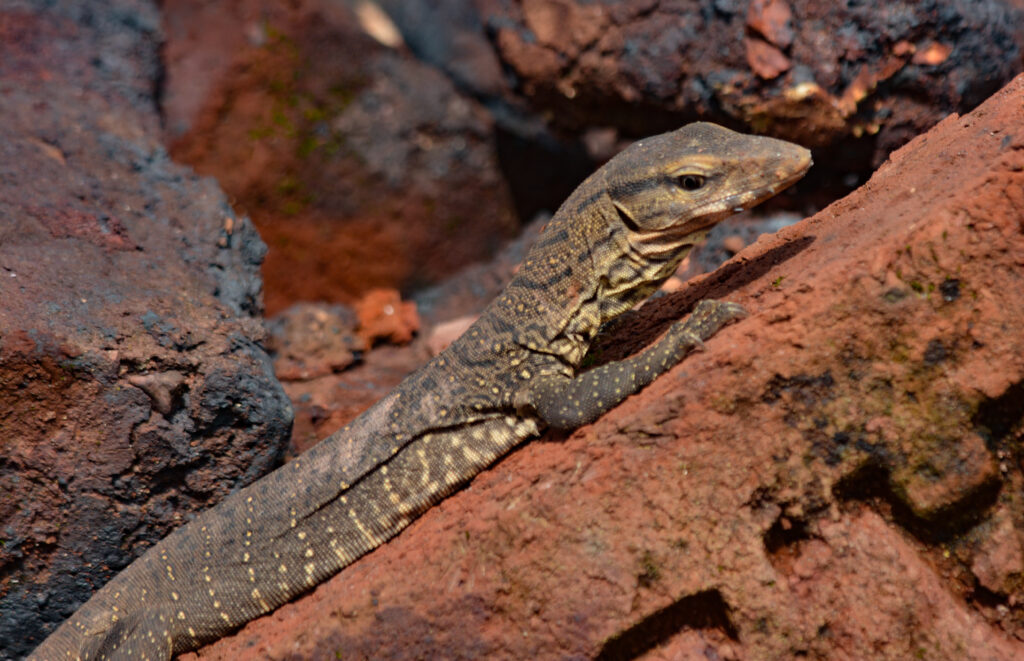
Monitor lizards face mounting pressures across their range, with habitat destruction representing the most pervasive threat. Agricultural expansion, urbanization, and logging have fragmented once-continuous habitats, isolating populations and reducing genetic diversity. The exotic pet trade places particular pressure on rarer and more colorful species, with thousands of monitors captured annually for international markets. Hunting for meat and traditional medicine threatens larger species, with water monitor and Komodo dragon gallbladders particularly valued in some Asian medical traditions. Climate change poses a growing concern, with shifting rainfall patterns and increasing temperatures potentially disrupting reproduction and food availability. Road mortality significantly impacts monitor populations near human settlements, with their tendency to bask on warm asphalt making them vulnerable to vehicle strikes. Invasive species further complicate conservation efforts—introduced predators threaten monitor eggs and juveniles, while competition from other invasive reptiles can displace native monitors from preferred habitats. Despite these challenges, most monitor species maintain sufficient population levels to avoid immediate extinction risk, though many local populations face extirpation.
Cultural Significance Across Civilizations
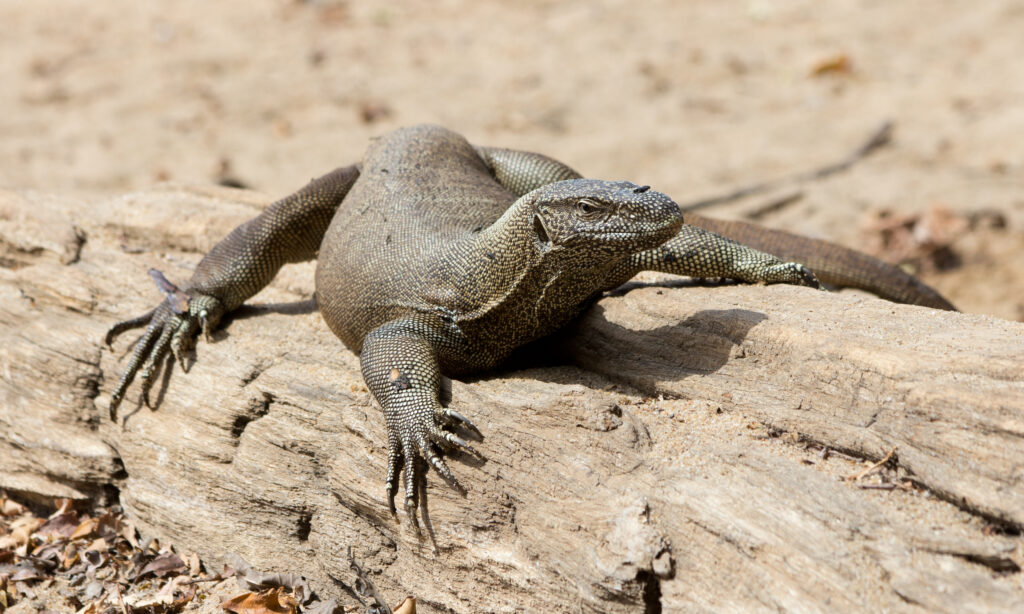
Monitor lizards have featured prominently in human cultures throughout recorded history, often associated with mythological and religious significance. Aboriginal Australian Dreamtime stories frequently feature monitors as creator beings or tricksters, reflecting their prominence in the landscape and Aboriginal diet. In Southeast Asian folklore, monitors often symbolize strength and cunning, with ritual items incorporating monitor parts believed to transfer these qualities to their owners. Ancient Egyptian art depicts the Nile monitor in hunting scenes, while some scholars suggest monitors may have inspired early dragon myths across cultures. The Sanskrit term “godhaa” for monitors gave rise to the modern Hindi word “goh,” reflecting their longstanding recognition in South Asian languages. Historical accounts from European explorers often described monitors with a mixture of fear and fascination, contributing to Western perceptions of exotic wildlife. Even today, monitors maintain cultural significance in many regions—in parts of Indonesia, Komodo dragon observation ceremonies mark important community events. This cross-cultural recognition spans millennia, demonstrating humanity’s enduring fascination with these reptilian predators.
Monitors in Captivity: Challenges and Responsibilities

Keeping monitor lizards in captivity presents substantial challenges that potential owners must carefully consider. Most species require expansive enclosures that replicate their natural environments—a medium-sized monitor typically needs housing measuring at least 8’×4’×4′, making them impractical for average households. Their dietary requirements demand regular access to whole prey items, including rodents, eggs, insects, and occasionally fish or crustaceans for specialized species. Proper temperature gradients, humidity control, and UVB lighting necessitate significant investment in equipment and ongoing electricity costs. Beyond physical requirements, monitors demonstrate complex behavioral needs requiring environmental enrichment and mental stimulation to prevent stereotypic behaviors. Their potentially aggressive temperament when mishandled makes them unsuitable for inexperienced keepers, with bites from larger specimens requiring medical attention. Lifespans exceeding 15-20 years for many species represent a long-term commitment that outlasts many marriages and housing situations. These factors combine to make monitors some of the most challenging reptiles in captivity, appropriate only for dedicated enthusiasts with sufficient resources, knowledge, and experience to meet their specialized needs.
Scientific Research and Future Discoveries

Monitor lizards continue to yield scientific insights across multiple disciplines, from evolutionary biology to pharmacology. Recent genome sequencing projects have illuminated their relationship to other reptiles and confirmed their close evolutionary connection to snakes. Ongoing research into Komodo dragon oral secretions has identified novel peptides with potential applications in anticoagulant medications and antimicrobial treatments. Behavioral studies utilizing modern tracking technology have revealed previously unknown migration patterns and territorial behaviors in multiple monitor species. Neurobiological investigations demonstrate surprisingly complex brain structure and function, challenging traditional views of reptilian cognitive limitations. Conservation biologists are developing non-invasive monitoring techniques using environmental DNA to track and monitor populations in remote habitats without disturbing the animals. Climate change researchers employ monitors as indicator species to assess ecosystem health and adaptation potential across varied environments. The coming decades will likely bring a deeper understanding of monitor venom systems, sensory capabilities, and reproductive physiology as scientific tools become more sophisticated. These remarkable reptiles represent living laboratories for evolutionary study, with continued research promising to unlock further secrets of their ancient lineage and specialized adaptations.
Conclusion
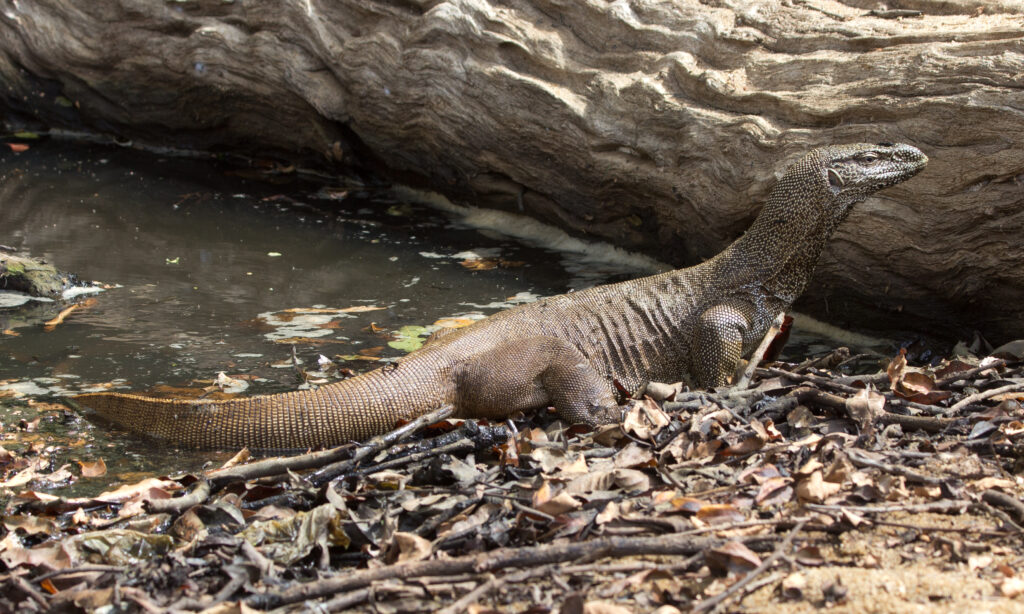
Monitor lizards stand as living connections to our planet’s prehistoric past, having survived and thrived through millions of years of evolutionary challenges. Their combination of primitive physical characteristics and surprisingly advanced cognitive abilities makes them unique among modern reptiles. From the massive Komodo dragon to the nimble tree monitors, these carnivorous reptiles continue to fascinate scientists and wildlife enthusiasts while playing crucial ecological roles across diverse habitats. As we deepen our understanding of these remarkable creatures, we gain not only insights into reptilian evolution but also a greater appreciation for the complex adaptations that have allowed monitors to endure as living echoes of a bygone era. Their continued survival depends on our commitment to habitat preservation and responsible stewardship of the wild places they call home.

